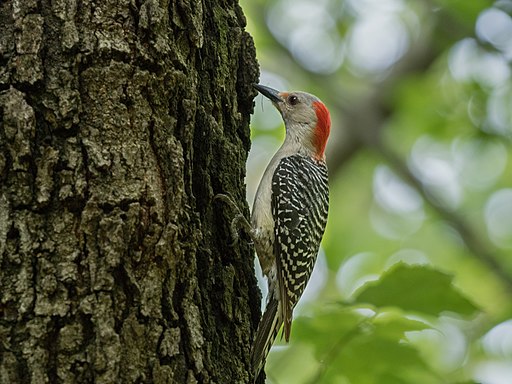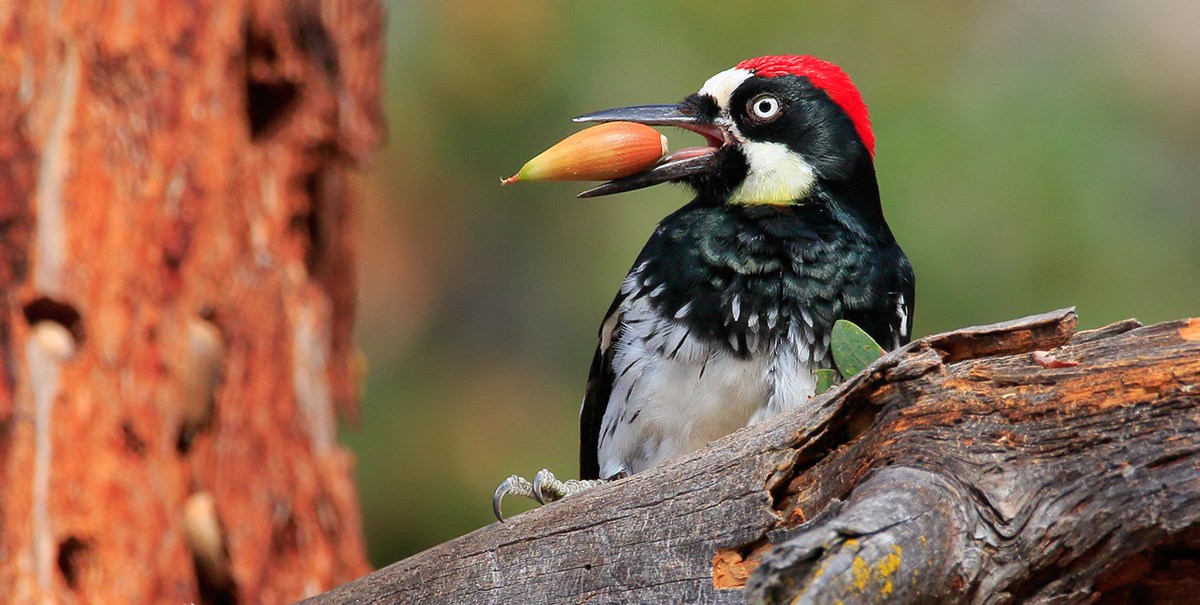Recognizing Woodpeckers in Florida: Habits, Variety, and Environments
Recognizing Woodpeckers in Florida: Habits, Variety, and Environments
Blog Article
Discover the Interesting World of Woodpeckers: Every Little Thing You Need to Know
The world of woodpeckers is a world filled up with one-of-a-kind behaviors, intricate adjustments, and a diverse selection of types. From their habitats and circulation patterns to their feeding habits and specialized anatomical attributes, woodpeckers have long astounded the rate of interest of ornithologists and nature fanatics alike. Comprehending the ins and outs of these remarkable birds offers a peek right into the complicated interaction between their biology and the setting. As we explore the globe of woodpeckers further, we discover a wide range of info that clarifies their significance in ecosystems and the difficulties they encounter in an ever-changing world.
Woodpecker Habitats and Distribution
Woodpeckers occupy a varied series of atmospheres worldwide, showcasing flexibility in their circulation patterns. These resistant birds are located in woodlands, timberlands, savannas, and deserts throughout numerous continents, showing their capability to prosper in various climatic conditions. In North America, for example, woodpeckers can be found in both coniferous and deciduous forests, utilizing their solid beaks to forage for pests and develop nesting dental caries in trees. In Africa, certain woodpecker species have actually adjusted to arid environments, such as the acacia timberlands, where they play a critical duty in managing insect populations.

Feeding Behaviors and Diet
Woodpeckers utilize their strong beaks to drill right into the bark of trees, penetrating for bugs and larvae hidden beneath the surface area. In enhancement to bugs, woodpeckers also eat nuts, seeds, fruits, and sap.
Woodpeckers are recognized for their drumming habits, which serves not just to interact with other woodpeckers but additionally to find food. The rapid drumming audio is produced by the bird pecking on resonant surface areas like dead trees or steel poles. This actions can draw in insects concealed in the wood, allowing the woodpecker to detect their visibility and feed upon them.
Unique Adjustments for Tree Climbing
In their skilled pursuit of pests hidden within tree bark, woodpeckers have actually progressed amazing physiological functions that equip them with special adaptations for reliable tree climbing. One of the vital adaptations is their zygodactyl feet, with 2 toes directing onward and two directing backward, giving a strong grasp on tree trunks. This specialized foot setup allows woodpeckers to hold on to vertical surfaces easily, enabling them to relocate up and down trees with dexterity. Furthermore, woodpeckers have tight tail feathers that function as a supportive prop while they climb up, assisting in balance and security. Their solid, chisel-like beaks are not only made use of for drilling into timber but likewise for clutching onto bark as they ascend tree trunks. Woodpeckers have solid neck muscular tissues and an unique skull framework that soak up the impact of constant pecking, enabling them to climb up up and down without creating harm to their brains. These adaptations showcase the extraordinary transformative layout that enables woodpeckers to navigate trees with precision and performance.
Diverse Woodpecker Types Worldwide
With over 200 different types imp source spread across numerous environments worldwide, the family members of Picidae includes an impressive variety read of woodpeckers. These birds can be discovered in forests, woodlands, savannas, and also city locations, showcasing their versatility to different environments. From the legendary Northern Flicker in The United States And Canada to the vibrant and elusive Crimson-backed Flameback in Asia, each woodpecker species shows special attributes in terms of plumage, actions, and habitat preference.
Woodpeckers differ considerably in size, with the diminutive Downy Woodpecker gauging around 6-7 inches in length, while the powerful Lineated Woodpecker can get to up to 17 inches - Woodpeckers in Florida. Their beaks likewise come in various sizes and shapes, reflecting their feeding behaviors. Some types specialize in removing bugs from tree bark, like the Acorn Woodpecker, while others, such as the Black-cheeked Woodpecker, feed on fruits and seeds

Conservation Initiatives and Challenges
Preservation efforts for woodpecker populaces are essential in reducing the effect of environment loss and various other dangers encountering these varied avian species. Woodpeckers deal with various obstacles to their survival, largely as top article a result of logging, urbanization, environment modification, and intrusive species. To attend to these issues, conservation initiatives concentrate on safeguarding and bring back woodpecker habitats, executing sustainable forestry practices, and raising awareness concerning the importance of these birds in ecosystems.
One significant obstacle in woodpecker preservation is the fragmentation of their environments, causing separated populations that are more vulnerable to termination - Woodpeckers in Florida. Preservationists function to produce wildlife hallways and shielded locations that link these fragmented habitats, permitting woodpeckers to relocate between different locations for feeding, reproducing, and shelter

Final Thought
In final thought, woodpeckers are remarkable birds with unique adaptations for tree climbing and feeding actions. They can be found in diverse environments worldwide, encountering conservation difficulties as a result of environment loss and human tasks. Recognizing their habitats, diets, and behaviors is important for preservation initiatives to secure these vital bird varieties. More study and preservation actions are needed to ensure the survival of woodpeckers in the wild.
Report this page